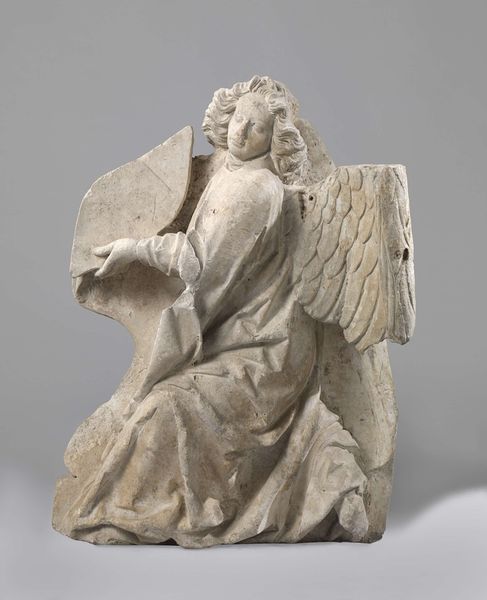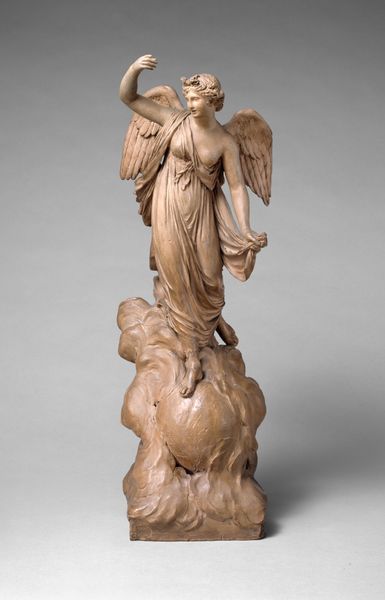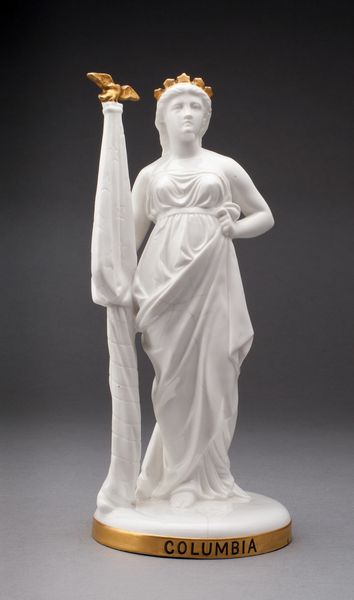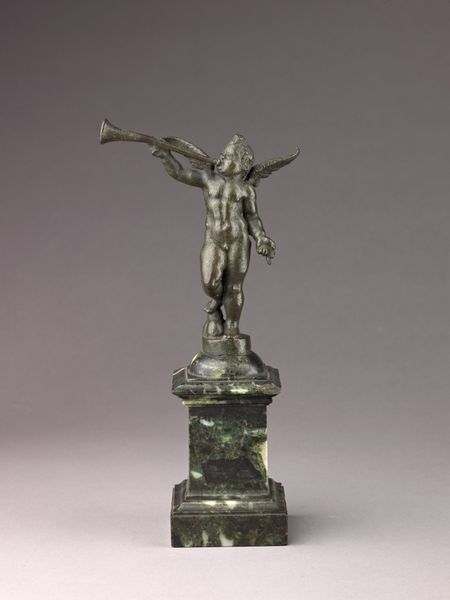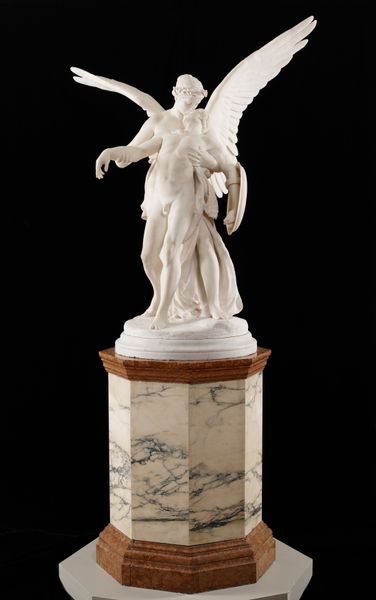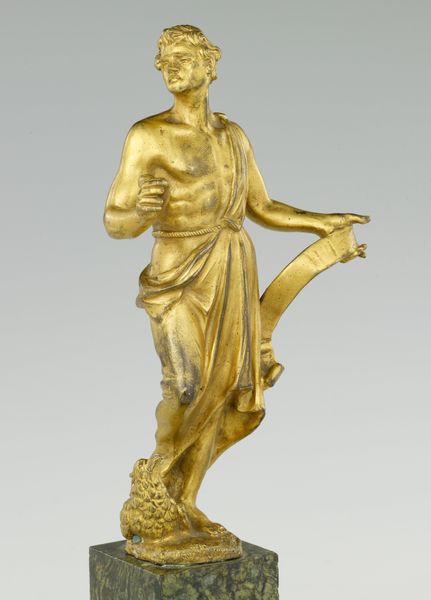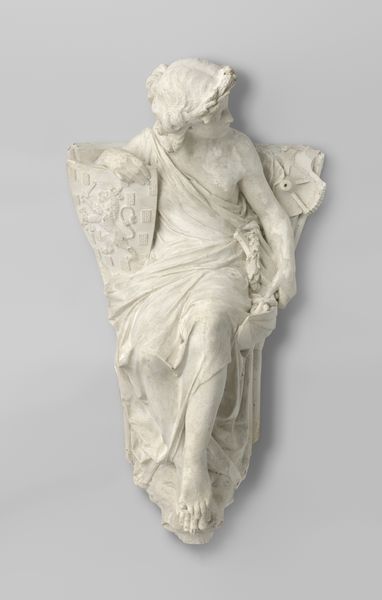
Copyright: Rijks Museum: Open Domain
Curator: Before you stands "Gipsmodel van het verdwenen Atjeh-monument te Batavia," a plaster sculpture dating to before 1882, by Bart van Hove. Editor: It looks like a ghostly figure emerging from the mist. The draped fabric has this incredible flow to it, even in still, solid form. Gives it an ethereal, almost sad presence. Curator: Indeed. The sculpture employs neoclassical allegorical figures, intending to personify triumph or victory, but what strikes you as "sad" might come from its context. It was, after all, a model for a monument intended to commemorate Dutch military campaigns in Aceh. Editor: Oh, so heavy stuff then! Suddenly that laurel wreath feels more like a weight. Funny how knowing that sours the sweet victorious vibe, huh? It’s plaster too; feels brittle. Curator: Precisely. Museums now grapple with displaying such objects; pieces meant to glorify colonial power. How do we acknowledge them critically rather than perpetuate the values they embody? It raises complex questions about the very public role of art. Editor: Totally. I mean, wings usually spell freedom, right? But here it almost looks like she's trapped under them, carrying a standard, but with nowhere to go. The original is lost so there is just a forlorn copy left... gives one to think what exactly is being "celebrated". The original is gone; this plaster ghost tells another story. Curator: It highlights art’s evolving dialogue with history and memory. This seemingly simple neoclassical form has become a powerful point of reckoning with a difficult past. Editor: Right. So, it went from 'rah-rah victory' to 'umm, let's unpack this.' It’s powerful how much a shift in perspective can change everything. Curator: Exactly. Thank you. Editor: Thanks to you! It got really me thinking on things and making assumptions based just on my impression! Bye!
Comments
No comments
Be the first to comment and join the conversation on the ultimate creative platform.



